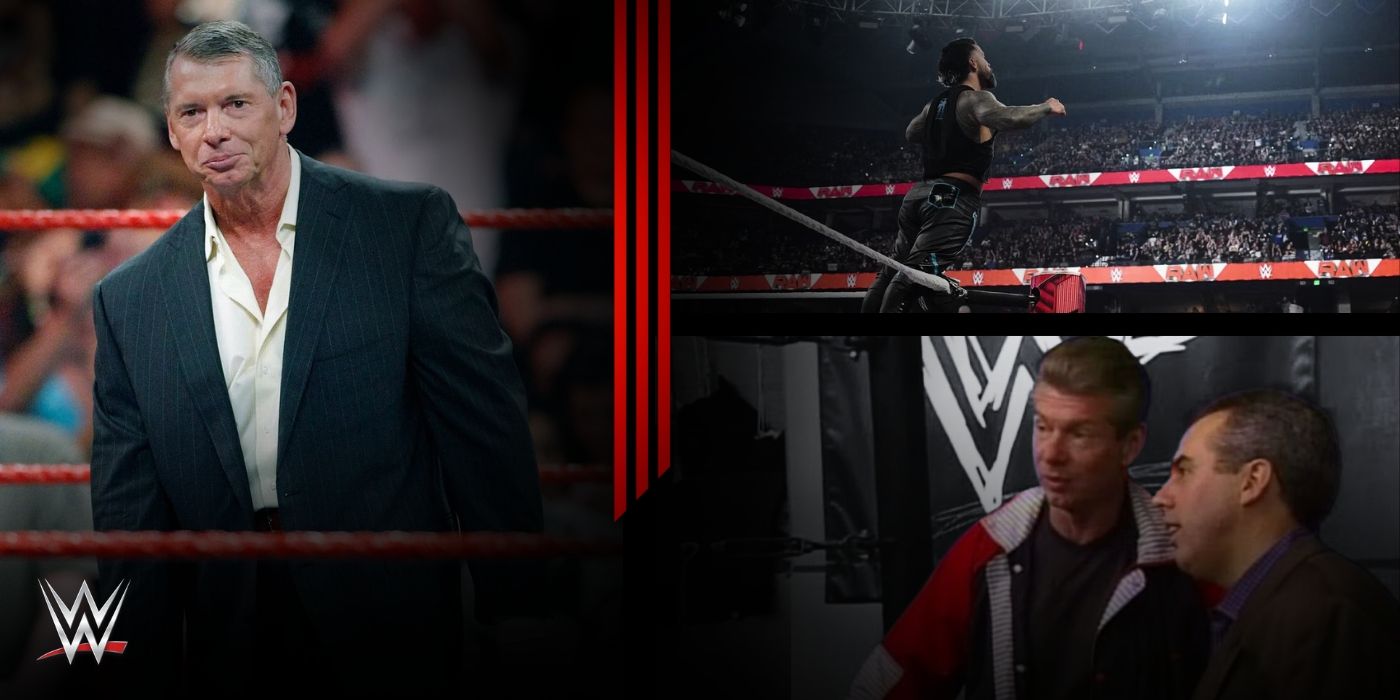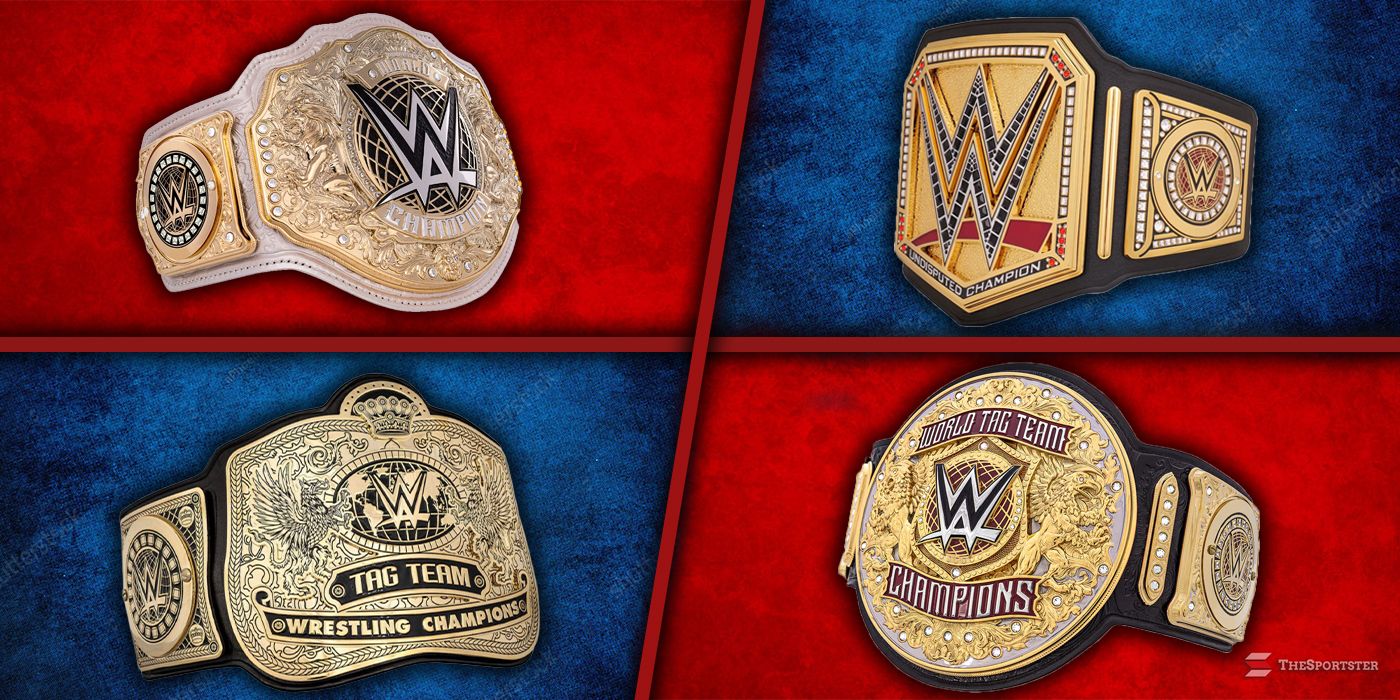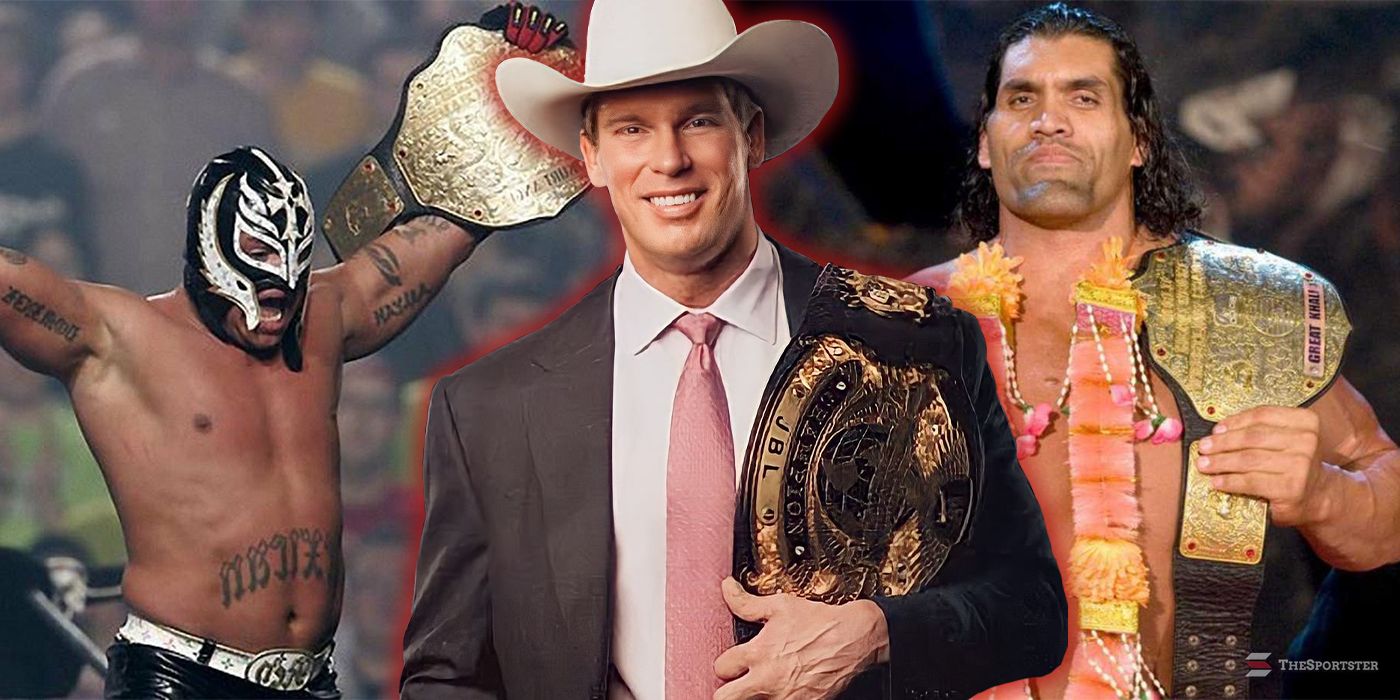The history of WWE has seen Vince McMahon taking the company in drastically different directions throughout the years. McMahon gaining power in the early ‘80s created the current version of WWE as a national-turned-international company and global brand. The old days of just having shows in New York were long gone due to Vince wanting to expand beyond his father’s goals.

How WWE’s “New Era” Has Dramatically Improved Their Presentation
With Vince McMahon and Kevin Dunn out, WWE’s on screen product is not only more exciting but looks it too.
WWE would see seven different eras from the early ‘80s to the current day. Each chapter has an argument for being the best due to fans usually gravitating towards which era made them happiest. The changes would see McMahon looking to truly embrace different sides of the presentation. Every era of WWE will be ranked according to the overall entertainment value of the time and how it holds up compared to the others.
UPDATE: 2024/05/03 20:00 EST BY ETHAN SCHLABAUGH
The WWE has been around for decades and just saw WrestleMania celebrate its 40th year in existence and the start of a new era in the company. Throughout management changes, pop culture changing around a company that refused to evolve, or wrestling becoming the biggest it ever has been, what era of WWE stands out for being the best compared to others? Let’s take a look as we usher in the so-called “Renaissance Era” and rank every era of WWE’s historical lineage.
8 The New Generation Era Wanted To Keep Wrestling Kid-Friendly
Was The Down Period Before A Massive Boom
|
Start Date |
End Date |
Notable Stars |
|---|---|---|
|
June 13, 1993 |
December 15th, 1997 |
Bret Hart, Shawn Michaels, Diesel, & Razor Ramon |
Vince McMahon realized that changes were needed when the company was under fire during the steroid trials. Hulk Hogan and Randy Savage were at the end of their WWE runs when McMahon put his eggs in the basket of new stars like Bret Hart, Shawn Michaels, Diesel, Razor Ramon, and Yokozuna. Michaels and Hart were viewed as the top two stars of the New Generation Era, which improved the in-ring quality of WWE. The matches to take place in the New Generation Era were dramatically better than those of the Golden Age. WWE did struggle to build new characters quickly, but they thrived by setting up a brighter future with this movement.
After a year or so of completely unenthused content, the focus on new names and more focused storytelling brought about a wave of renewed interest and popularity. The match quality shot upward, and this would prove to be a great precursor to perhaps WWE’s greatest-ever era. Most fans look back on the New Generation era poorly due to WWE reaching all-time lows in viewership, weekly ratings, and money just pouring out of the promotion. But as mentioned, this did lay the groundwork for not only the best time for WWE later on, but also gave people like Eric Bischoff the idea to make WCW more realistic and branch away from the cartoony characters that were ever present in the early 90s.
7 The PG Era Holds Up Better Than Most Realize
Still, Not Everything Was Great However
|
Start Date |
End Date |
Notable Stars |
|---|---|---|
|
July 22, 2008 |
March 24th, 2014 |
CM Punk, John Cena, The Undertaker & Randy Orton |
The PG Era is viewed as polarizing due to the biggest change in the ‘TV-PG’ rating. WWE abandoned the TV-14 guidelines to try to appeal to the family-friendly audience and it worked. John Cena was the face of the company throughout this run with countless classic matches against Edge, Batista, and many others. WWE also gave the spotlight to new stars in the main event picture with strong results. Jeff Hardy becoming a main eventer and CM Punk’s Summer of Punk were two of the highlights of this time. The Undertaker’s best WrestleMania matches also took place in the PG Era due to having better stories.
The PG Era is widely thought to be the downfall of WWE, but during that time, ratings were still incredibly high, the company had a lot of mainstream attention, and the roster was full of legitimate stars and future legends. Weekly TV was adapted to fit a more family-friendly audience, which wasn’t ideal for a lot of fans, but there were still plenty of long-term stories and fantastic matches, with the era perhaps getting a stricter rap that it deserves. PPVs such as WrestleMania and the Royal Rumble felt bigger and bigger as years went by, with the PG Era helping to put Mania in bigger stadiums all around the continent.
6 The Renaissance Era Saw A Change In Leadership
The Future Is Looking Bright For WWE
|
Start Date |
End Date |
Notable Stars |
|---|---|---|
|
April 6th, 2024 |
PRESENT |
Cody Rhodes, Bianca Belair, Gunther, & Jade Cargill |
As will be talked a bit about in the next entry, WWE is officially no longer in the hands of Vince McMahon and is being ushered into this new period that has been called the “Renaissance Era” or the “Triple H Era”. WrestleMania 40 has been cited as the night everything changed, with names like Cody Rhodes, Damian Priest, and Jade Cargill all picking up major wins on the “Grandest Stage Of Them All”.

Every WWE Championship Design Under The Triple H Era, Ranked
Paul “Triple H” Levesque is steering the WWE in a new direction. Here’s every WWE championship design of the Triple H era, ranked.
WWE’s calendar is also seeing them venture across the globe more often with premium live events happening in France, Berlin, Scotland, & Saudia Arabia. This change in leadership has been seen as a massive positive with talent proclaiming their excitement for this change and what’s to come.
5 The New Era Gave Women More Respect
Also, Saw The Start Of The Tribal Chief
|
Start Date |
End Date |
Notable Stars |
|---|---|---|
|
May 1st, 2016 |
April 6th, 2024 |
Roman Reigns, Charlotte Flair, Seth Rollins, & Becky Lynch |
With the “New Era” officially in the rearview mirror, fans can now look back on the many historic events that happened in professional wrestling at this time. Speaking in terms of just the WWE, fans saw the first-ever women’s WrestleMania main event at WrestleMania 35, the crowing of multiple black World Champions, and the beginning of what would be Roman Reigns as the Tribal Chief. Looking outside the WWE bubble, the promotion would receive its first true major competition since World Championship Wrestling in the form of All Elite Wrestling, with names like Jon Moxley, Chris Jericho, and later CM Punk all joining the new promotion instead of the WWE.
There was a brief break in the fun around 2020 when the pandemic started and created the oddest time in professional wrestling when shows had to be held in empty arenas or stadiums with LED screens of fans at home. Major returns like Daniel Bryan, Edge, Cody Rhodes, and CM Punk shook the foundation of the company and were some of the biggest moments fans could ever imagine. Toward the end of the “New Era” management also changed hands with Vince McMahon being forced out of the WWE leaving the promotion in the hands of Paul “Triple H” Levesque and Nick Khan.
4 The Golden Era Was The Start Of The WWF
Pop Culture And Wrestling Blended Together
|
Start Date |
End Date |
Notable Stars |
|---|---|---|
|
1982 |
June 13, 1993 |
Hulk Hogan, Randy Savage, Andre The Giant, & The Ultimate Warrior |
The big expansion of WWE took place during the Golden Age when Hulk Hogan became the face of the company. Vince McMahon’s vision of a character like Hogan leading the way, and the concept of WrestleMania creating a new business model, helped WWE grow to a force never before seen in wrestling. Characters like Hogan, Randy Savage, Roddy Piper, and Ultimate Warrior led the company to great success. However, it is hard to compare the Golden Age to other eras since there were so few important matches and events per year. Hogan rarely defended the title and WWE mostly had squash matches making this era less celebrated than others.
During the Golden Age, WWE expanded into developing larger-than-life superstars which helped boost the product to a wider level, with WrestleMania being brought into existence, which is certainly enough to stake a claim at this being one of the most integral stages in the company’s existence. However, the overall quality, aside from the immense popularity of the biggest stars, did lack quite a lot. The focus was on wrestlers who would hit the simplest of moves, but get the biggest reactions, and whilst that was a formula that worked, it meant that the lower card suffered tremendously, even with many talented performers, and some not-so-talented ones too. Even with WrestleMania, the company had much more room and time to grow, and it would continue to do so.
3 The Reality Era Blurred The Lines Of Kayfabe
Wouldn’t Last Long Before A New Change
|
Start Date |
End Date |
Notable Stars |
|---|---|---|
|
March 24th, 2014 |
May 1st, 2016 |
Roman Reigns, Daniel Bryan, Seth Rollins, Charlotte Flair |
The shortest era for WWE came from 2014 to 2016 in the form of the Reality Era. WWE embraced the reality in storylines like Daniel Bryan rising to the top due to fans demanding it. Other stars like AJ Styles, Kevin Owens, and The Shield broke out to make WWE feel fresher than it had in many years. WWE had quite a few defining moments during this short time like Brock Lesnar ending The Undertaker’s WrestleMania streak and all three Shield members winning gold. The biggest downfall of the Reality Era, however, was it ending too soon with WWE losing touch with that style in the New Era.
Just before the “Reality Era” began, WWE’s product was experiencing somewhat of a lull, and the change of focus to new names brought about a completely rejuvenated feeling about television. The reign of The Authority on top may have felt like a pain at the time, but looking back, it brought about some hugely enjoyable moments with names such as Seth Rollins and Daniel Bryan. Unfortunately, not every popular name was capitalized on, and bad booking crept its way in between the cracks, making it not entirely perfect. The ever-constant push of Roman Reigns at a time when fans wanted anything but him and the over-reliance on part-timers like Brock Lesnar to hold belts and not even appear on most PPVs were heavily criticized.
2 The Ruthless Aggression Era Was The Cooldown Period
Had Some Of The Best In-Ring Action WWE Has Seen
|
Start Date |
End Date |
Notable Stars |
|---|---|---|
|
June 24th, 2002 |
July 22, 2008 |
Brock Lesnar, Kurt Angle, Batista, & John Cena |
WWE found a way to bring many strong aspects of the product together during the Ruthless Aggression Era. This was a rare time when Vince McMahon named the era on television. The movement led to names like John Cena, Batista, Randy Orton, and Brock Lesnar debuting and eventually hitting their goal as top stars. The Undertaker and Triple H continued to thrive in the new time and had arguably the most successful chapters of their respective careers, and even the unsung heroes of the company like Rey Mysterio, Chris Jericho, and Edge received main event runs. WWE starting the brand split was a huge success and helped make the Ruthless Aggression Era a special time in company history.

10 Worst Champions Of WWE’s Ruthless Aggression Era
WWE’s Ruthless Aggression Era featured some poor champions that didn’t elevate their titles.
There were several great things about the Ruthless Aggression Era, with the wrestling quality being at a consistent high, the stories being full of grit and intensity, and a direct focus on building up new stars that would help carry the company for years to come. Many names from previous eras adapted perfectly to fit within this new regime, with everything coming together following the brand split, with Raw and Smackdown feeling like two different entities, offering fans the chance to see so many huge established stars, but also many new ones. The company also had the benefit of riding high after the biggest period in its history, the Attitude Era, and used that momentum to push those aforementioned names like Cena and Lesnar to incredible heights that can rival that of legends like Steve Austin and Hulk Hogan.
1 The Attitude Era Was The Absolute Peak Of WWE
Wrestling Was Bigger Than Ever Before
|
Start Date |
End Date |
Notable Stars |
|---|---|---|
|
December 15th, 1997 |
June 24th, 2002 |
Stone Cold Steve Austin, The Rock, The Undertaker, & Mick Foley |
The success of WWE was so strong during the Attitude Era that it became an impossible task to argue against it. Steve Austin, The Rock, Triple H, Mick Foley, and The Undertaker were just the first historic names to thrive in the main event scene at this time. WWE having both Austin and Rock was the only time two stars of that magnitude were leading the same era. Other company areas like the tag division were more vital than ever with the Hardy Boyz, Dudley Boyz, and Edge & Christian leading the way. The Attitude Era did have some abysmal storylines and tough shows to watch in 1999 especially, but the talent always made it interesting. WWE had an all-star lineup of talent creating the strongest impact in mainstream pop culture and because of how segmented and “niche-ified” entertainment is nowadays, WWE will likely never be as hot in the “mainstream” pop culture as they were here.
The match quality might have not been the best and paled in comparison to the in-ring action that the future eras, like the Ruthless Aggression or Reality Era, ushered in. As mentioned, storylines weren’t always the best and fans had to deal with things like Beaver Cleavage and Mae Young birthing a hand. Despite all of this, fans were still heavily invested with countless eyes clued to their television set every Monday to see what was happening during the Monday Night Wars between WCW and WWE. Even today the company still relies on the usage of these big names like The Rock returning every once in a while or Stone Cold Steve Austin getting a second chance at a retirement match against Kevin Owens at WrestleMania.

